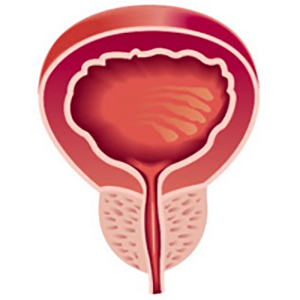Chronic prostatitis as possible risk factor for Peyronie's disease (PD): psychological, sexual and prostatitis-like symptoms in patients with PD

Accepted: May 11, 2023
Supplementary material: 57
All claims expressed in this article are solely those of the authors and do not necessarily represent those of their affiliated organizations, or those of the publisher, the editors and the reviewers. Any product that may be evaluated in this article or claim that may be made by its manufacturer is not guaranteed or endorsed by the publisher.
Authors
Objective: This study aims to investigate a possible relationship between chronic prostatitis (CP) and Peyronie's disease (PD) and to characterize the psychological profile of patients suffering from PD, with or without concomitant CP. Methods: We included 539 patients with PD, of which 200 were found to have underlying CP. As a comparator population, we selected 2201 patients without PD, referring to our tertiary care clinic. In this population, we detected 384 subjects with CP. All 539 PD patients underwent photographic documentation of the penile deformation, and dynamic penile eco-color Doppler with plaque and volume measurements and answered the following questionnaires: the Generalized Anxiety Disorder-7, the Patient Health Questionnaire-9, the Visual Analog Scale for penile painmeasurements, the International Index of Erectile Function (IIEF), and the NIH-Chronic Prostatitis Symptom Index. Results: The overall prevalence of chronic prostatitis in PD patients was 37.1% compared to a prevalence of 17.4% in the non-PD control population (OR = 2.79 and p < 0.0001). The severity of CP symptom total scores (NIH-CPSI) correlated significantly with the severity of erectile dysfunction (p < 0.0001). Significant anxiety was present in 89.2% of PD patients and it is more prevalent in PD patients with CP than in PD patients without CP (93.0% vs. 87.0%, respectively; p = 0.0434). Significant depression was detected in 57.1% of PD patients and it is more prevalent in PD patients with CP than in PD patients without CP (64.0% vs. 53.09%, respectively; p = 0.0173). Conclusion: Chronic prostatitis (CP) and Peyronie's disease (PD) are frequently associated. Our results demonstrate the strong impact of chronic prostatitis on the mental status of PD patients. Anxiety and depression were significantly more pronounced in PD patients with CP than in PD patients without CP.
How to Cite

This work is licensed under a Creative Commons Attribution-NonCommercial 4.0 International License.
PAGEPress has chosen to apply the Creative Commons Attribution NonCommercial 4.0 International License (CC BY-NC 4.0) to all manuscripts to be published.

 https://doi.org/10.4081/aiua.2023.11406
https://doi.org/10.4081/aiua.2023.11406



